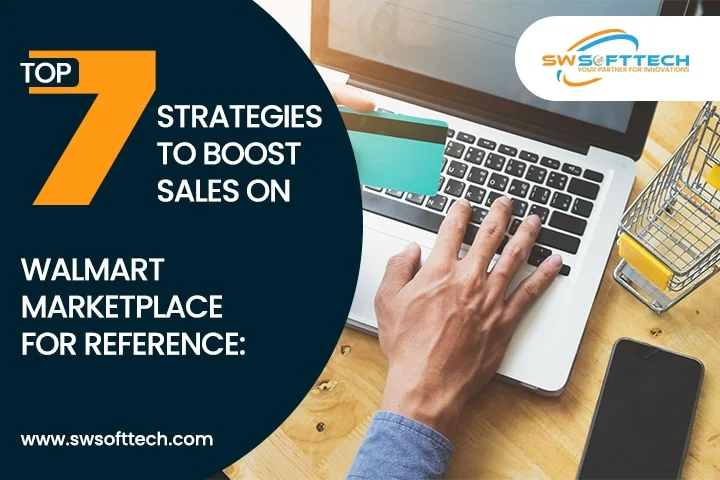Top 7 Strategies to Boost Sales on Walmart Marketplace

Top 7 Strategies to Boost Sales on Walmart Marketplace
One of the most recalling things about Amazon marketing services is that it offers a place that helps people do so much of the heavy lifting with easy purchasing at the best prices.
What with being the world’s largest ecommerce storefront, Amazon brings droves of traffic to your listing.
Moreover, that traffic is a pool of buyers, ready to purchase, unlike anything else the world has ever seen.
While eyeballs on Google often equate to browsers and researchers, Amazon attracts buyers.
A reasonable conversion rate on an Amazon product detail page is widely considered 15%. That’s a huge number, often 3-5x that of other ecommerce sites.
This is because Amazon product page traffic is already in the purchasing mindset.
Of course, to make the most of the traffic Amazon drives to your product page, you must ensure that your listing is optimized correctly for search and Amazon marketing best practices.
Which are the Key Steps to Steal for Success with Amazon Marketing ?
Tactic 1: Email Marketing
It’s a fact that the key to the boom in Amazon’s marketing services is through email. While most organizations still depend on traditional email strategies, Amazon has developed an extremely advanced email strategy.
The biggest eCommerce giant is working on the nine different kinds of marketing and transactional emails, which take the audience through a proper process of purchasing emails. With this, working on other upsells and reviewing bids is always easy. In addition, these messages get Amazon account holders accustomed to the website and its services, leading them to continue purchasing.
There is no denying that Amazon pioneered highly personalized product recommendation emails based on the purchase history, location, past order value, age, gender, and on-site browsing.
What Could Be Improved
With Amazon marketing taking the most success for personalized product recommendations, they are still the guidance of many that keep most of the people inspired. Take the example below.
I purchased two sweat removal towels on Amazon and then received this message that I am buying two sweat removal towels.
It’s inevitable that I have looked at many different sweat towels and had initially added more than two to my eCommerce cart, so I provided all the valuable data to create this email. But perhaps their recommendation of algorithm’s selection shouldn’t be that I will want two more of the exact product type I just purchased. Instead, I had hoped that their eCommerce search engine would connect the purchase to other products within the yoga category.
Tactic 2: Ratings and Reviews
Of course, Amazon is always a reliable eCommerce platform used as a Marketplace. They were one of the first organizations to put a review system on its website in 1995. Amazon’s reviews are so great that they make for platforms like Reddit and Tumblr.
In today’s time, reviews and ratings are common on eCommerce sites worldwide, with all the good reasons to think upon. Many famous names in this approach have found that the customized ratings and reviews platform lifts revenue by 18%. After all, shoppers trust user-generated content 1,200% more than the guide from retailers and manufacturers.
Perhaps even more blissfully, when one minor feature was added to their review platform, Amazon began to look for a great business in billion each year. That overall magic addition was the simple question, “Was this review helpful?”
Another critical point about Amazon’s review tactics is they solicit reviews for each product individually. While many companies send an email asking for reviews, most sum up their requests altogether. Meanwhile, Amazon will send out different emails for different products, even when they purchase everything simultaneously. This way, Amazon’s marketing professionals, especially email marketers, create messages with precise subject lines.
When customers go through their email process, they are more likely to notice a particular product name than a subject line asking them to “rate their purchases.” For example, suppose someone particularly liked or disliked a specific product. In that case, they will be likelier to click on the particular email request that mentions it rather than the general solicitation email. The example below from Amazon and the other eCommerce marketplace reflects it.
What Could Be Improved
While Amazon’s marketing services and its Marketplace seller certainly solicit reviews, it’s curious that they don’t amplify the solicitation with incentives.
Although Amazon doesn’t have any loyalty program like other eCommerce platforms with which it’s easy to integrate reviews so that it’s easy for shoppers to write a review. The review writer could be entered into a brawl, with each approved reviewed up until a certain point counting toward an extra entry. With this, reviewers of the products could relatively earn a small discount for their work or even get coupons for specific products.
If reviews are considered a motivation booster, it has connected more customers would return to write without being fueled by the passion of a negative experience.
Tactic 3: Video
Amazon has been streaming videos for several years now and has seen great success with the traditional form of marketing. Not to deny that Amazon is often seen as concerned for the video and its marketing to segment each product so that they get listed up as per the featured products. What matters more is that the search engine combines entertainment, shopping, and immediate gratification. Viewers like it better could open up a whole new world for Amazon’s marketing programs.
What Could Be Improved
This reflection show is so new that all it matters is the change! While not all retailers have the resources to do a show like this, they can feature videos of their audience wearing and using their products with direct links to product pages. And maybe even Amazon should work on it. To get over it, real-time customers are often better proof of quality product than possibly paid advertisers and influencer endorsers. If Amazon featured a mix of average customers alongside more prominent names, they could complete the process accordingly.
Summing Up
Now that you know which Amazon marketing key takeaway can help you steal the show, it’s best to encompass a marketing strategy. Building and implementing your Amazon marketing plan will take time and resources, but it’s worth the effect for the return on investment. If you don’t have ample time, knowledge, or resources to bring these marketing strategies to your Amazon account, SW SOFTTECH can help.













